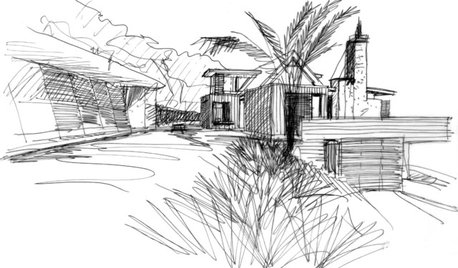Limey and worst lawn I've ever seen.
agrocoders
9 years ago
Related Stories

CONTAINER GARDENSPatio-Perfect Berry Bushes Like You’ve Never Seen
Small enough for pots but offering abundant fruit, these remarkable bred berries are a boon for gardeners short on space
Full Story
DECORATING GUIDES10 Design Tips Learned From the Worst Advice Ever
If these Houzzers’ tales don’t bolster the courage of your design convictions, nothing will
Full Story
DECORATING GUIDESFrom Queasy Colors to Killer Tables: Your Worst Decorating Mistakes
Houzzers spill the beans about buying blunders, painting problems and DIY disasters
Full Story
THE ART OF ARCHITECTUREBack of an Envelope: Architects’ Sketches and the Homes They’ve Made
There’s something evocative about a hand-drawn architectural sketch that a computer just can’t replicate. Here are some great examples
Full Story
LANDSCAPE DESIGNGet Along With Less Lawn — Ideas to Save Water and Effort
Ditch the mower and lower your water bill while creating a feast for the eyes with diverse plantings and gathering places
Full Story
FIREPLACESRumford Fireplaces Are Hotter Than Ever
Higher efficiency and good looks are leading homeowners back to this 18th-century fireplace design
Full Story
FALL GARDENINGMake This Fall’s Garden the Best Ever
Learn the most important tip for preventing buyer’s remorse, plus get more valuable buying and planting advice
Full Story
FURNITURE6 Decades-Old Designs That Look Better Than Ever
After getting a few nips and tucks, some favorites from the ’60s and ’70s have made a stylish comeback
Full Story
SAVING WATERHouzz Call: Are You Letting Go of Your Lawn?
Many facing a drought are swapping turf for less thirsty plantings. If you’re one of them, we’d like to hear about it
Full Story
FRONT YARD IDEASBefore and After: Front Lawn to Prairie Garden
How they did it: Homeowners create a plan, stick to it and keep the neighbors (and wildlife) in mind
Full Story







dchall_san_antonio
agrocodersOriginal Author
Related Professionals
Chattanooga Landscape Architects & Landscape Designers · Glassmanor Landscape Architects & Landscape Designers · Middle River Landscape Architects & Landscape Designers · Deerfield Landscape Contractors · El Reno Landscape Contractors · Flagstaff Landscape Contractors · Kailua Landscape Contractors · Monterey Landscape Contractors · New Cassel Landscape Contractors · Roswell Landscape Contractors · Smyrna Landscape Contractors · Sun Valley Landscape Contractors · Buena Park Swimming Pool Builders · Huntsville Swimming Pool Builders · Los Alamitos Swimming Pool Buildersdchall_san_antonio
agrocodersOriginal Author
dchall_san_antonio
agrocodersOriginal Author
dchall_san_antonio
agrocodersOriginal Author